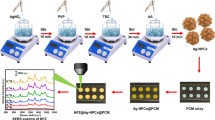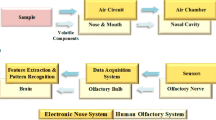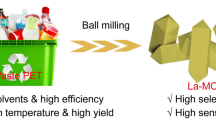Abstract
A miniaturized analytical methodology was introduced based on the combination of a direct and online hollow fiber microextraction method with smartphone color detection. The method was used for the determination of formaldehyde (target analyte) in fabric and wastewater samples. In this regard, two reagents including ammonium acetate buffer and acetylacetone were added to the formaldehyde samples to create a colored compound. The colored compound was extracted from the sample by using the hollow fiber liquid-phase microextraction method, the extracted phase was not taken out of the extraction box and was directly transferred into a specially designed detection cell, and a smartphone was applied for in-situ color sensing and data readout. This combination gathered the advantages of both state-of-the-art microextraction techniques and smartphone sensing. Formaldehyde, as a carcinogenic compound widely used in paint and clothing industries, was selected as a model test. Factors affecting extraction efficiency were investigated and optimized, including the type of organic solvents, reagent concentration, salt, pH, stirring speed, reaction temperature, and extraction time. The linear region of the method under optimal conditions was 40–1500 µg L−1 for wastewater samples and 0.3–11.2 mg kg−1 for fabrics. The limit of detection and limit of qualification were 13 and 40 µg L−1, respectively. The relative standard deviations for concentrations of 100 and 1000 µg L−1 were 6% and 4%, respectively. To evaluate the application of the method for real samples, types of fabric and two samples of oil refinery wastewater were selected. The relative recovery in real samples was 84–98%. The results of the analytical parameters of the method show that the developed method can be used as an efficient method to determine formaldehyde in real samples.
Graphical abstract








Similar content being viewed by others
References
Sarafraz –Yazdi A, Amiri A (2010) Liquid-phase microextraction. TrAC Trends Anal Chem 29:1–14
Arabi M, Ostovan A, Bagheri A, Guo X, Wang L, Li J, Wang X, Li B, Chen L (2020) Strategies of molecular imprinting-based solid-phase extraction prior to chromatographic analysis. TrAC Trends Anal Chem 128:115923
Arabi M, Ostovan A, Li J, Wang X, Zhang Z, Choo J, Chen L (2021) Molecular imprinting: green perspectives and strategies. J Adv Mater 33:543
Márquez-Sillero I, Aguilera-Herrador E, Cárdenas S, Valcárcel M (2011) Determination of 2, 4, 6-tricholoroanisole in water and wine samples by ionic liquid-based single-drop microextraction and ion mobility spectrometry. Anal Chim Acta 702:199–204
Pedersen-Bjergaard S, Rasmussen KE (1999) Liquid–liquid–liquid microextraction for sample preparation of biological fluids prior to capillary electrophoresis. Anal Chem 71:2650–2656
Jafari MT, Riahi F (2014) Feasibility of corona discharge ion mobility spectrometry for direct analysis of samples extracted by dispersive liquid–liquid microextraction. J Chromatogr A 343:63–68
Peng B, Zhou J, Xu J, Fan M, Ma Y, Zhou M et al (2019) A smartphone-based colorimetry after dispersive liquid–liquid microextraction for rapid quantification of calcium in water and food samples. Microchem J 149:104072
Shahvar A, Saraji M, Shamsaei D (2018) Smartphone-based chemiluminescence sensing for TLC imaging. Sens Actuators B Chem 255:891–894
Shahvar A, Saraji M, Shamsaei D (2018) Headspace single drop microextraction combined with mobile phone-based on-drop sensing for the determination of formaldehyde. Sens Actuators B Chem 273:1474–1478
Zhang D, Liu Q (2016) Biosensors and bioelectronics on a smartphone for portable biochemical detection. Biosens Bioelectron 75:273–284
Geng Z, Zhang X, Fan Z, Lv X, Su Y (2017) Recent progress in optical biosensors based on smartphone platforms. Sens 17:2449
Xu X, Akay A, Wei H, Wang S, Pingguan-Murphy B, Erlandsson BE, Li X, Lee W, Hu J, Wang L (2015) Advances in smartphone-based point-of-care diagnostics. IEEE 103:236–247
Rezazadeh M, Seidi S, Lid M, Pedersen-Bjergaard S, Yamini Y (2019) The modern role of smartphones in analytical chemistry. TrAC Trends Anal Chem 118:548–555
del Valle M (2021) Sensors as green tools in analytical chemistry. Green Sustain Chem 31:100501
Shahvar A, Saraji M, Shamsaei D (2020) Smartphone-based on-cell detection in combination with emulsification microextraction for the trace level determination of phenol index. Microchem J 154:104611
Shahvar A, Saraji M, Gordan H, Shamsaei D (2019) Combination of paper-based thin film microextraction with smartphone-based sensing for sulfite assay in food samples. Talanta 197:578–583
Nitiyanontakit S, Varanusupakul P, Miró M (2013) Hybrid flow analyzer for automatic hollow-fiber-assisted ionic liquid-based liquid-phase microextraction with in-line membrane regeneration. Anal Bioanal Chem 405:3279–3288
Ramos Payán MD, Jensen H, Jacob Petersen N, Honoré Hansen S, Pedersen-Bjergaard S (2012) Liquid-phase microextraction in a microfluidic-chip–high enrichment and sample clean-up from small sample volumes based on three-phase extraction. Anal Chim Acta 735:46–53
Textiles (2011) Determination of formaldehyde, part 1: free and hydrolysed formaldehyde (water extraction method). https://www.iso.org/standard/55524/ ISO 14184-1:2011. Accessed 2022
Ganjikhah M, Shariati S, Bozorgzadeh E (2017) Preconcentration and spectrophotometric determination of trace amount of formaldehyde using hollow fiber liquidphase microextraction based on derivatization by Hantzsch reaction. J Iran Chem Soc 14:763–769
Li Q, Oshima M, Motomizu S (2007) Flow-injection spectrofluorometric determination of trace amounts of formaldehyde in water after derivatization with acetoacetanilide. Talanta 72:1675–1680
Zhang D, Zhang J, Li M, Li W, Aimaiti G, Tuersun G et al (2011) A novel miniaturised electrophoretic method for determining formaldehyde and acetaldehyde in food using 2-thiobarbituric acid derivatisation. Food chem 129:206–212
Arvand M, Bozorgzadeh E, Shariati S, Zanjanchi MA (2012) Ionic liquid-based dispersive liquid–liquid microextraction for the determination of formaldehyde in wastewaters and detergents. Environmental 184:7597–7605
Hill AA, Lipert RJ, Fritz JS, Porter MD (2009) A rapid, simple method for determining formaldehyde in drinking water using colorimetric-solid phase extraction. Talanta 77:1405–1408
Motyka K, Onjia A, Mikuška P, Večeřa Z (2007) Flow-injection chemiluminescence determination of formaldehyde in water. Talanta 71:900–905
Safari M, Yamini Y, Tahmasebi E, Latifeh F (2015) Extraction and preconcentration of formaldehyde in water by polypyrrole-coated magnetic nanoparticles and determination by high‐performance liquid chromatography. J Sep Sci 38:3421–3427
Acknowledgements
This work was supported by the research council of the Isfahan University of Technology (IUT).
Author information
Authors and Affiliations
Contributions
Salman Javadian: conceptualization, investigation, methodology, formal analysis. Mohammad Saraji: supervision, writing—review and editing. Ali Shahvar: conceptualization, writing—original draft, validation.
Corresponding author
Ethics declarations
Conflict of interest
The authors declare no competing interests.
Additional information
Publisher’s Note
Springer Nature remains neutral with regard to jurisdictional claims in published maps and institutional affiliations.
Rights and permissions
Springer Nature or its licensor (e.g. a society or other partner) holds exclusive rights to this article under a publishing agreement with the author(s) or other rightsholder(s); author self-archiving of the accepted manuscript version of this article is solely governed by the terms of such publishing agreement and applicable law.
About this article
Cite this article
Javadian, S., Saraji, M. & Shahvar, A. Combination of online hollow fiber liquid phase microextraction with smartphone-based sensing for in situ formaldehyde assay in fabric and wastewater samples. Microchim Acta 191, 329 (2024). https://doi.org/10.1007/s00604-024-06406-0
Received:
Accepted:
Published:
DOI: https://doi.org/10.1007/s00604-024-06406-0




